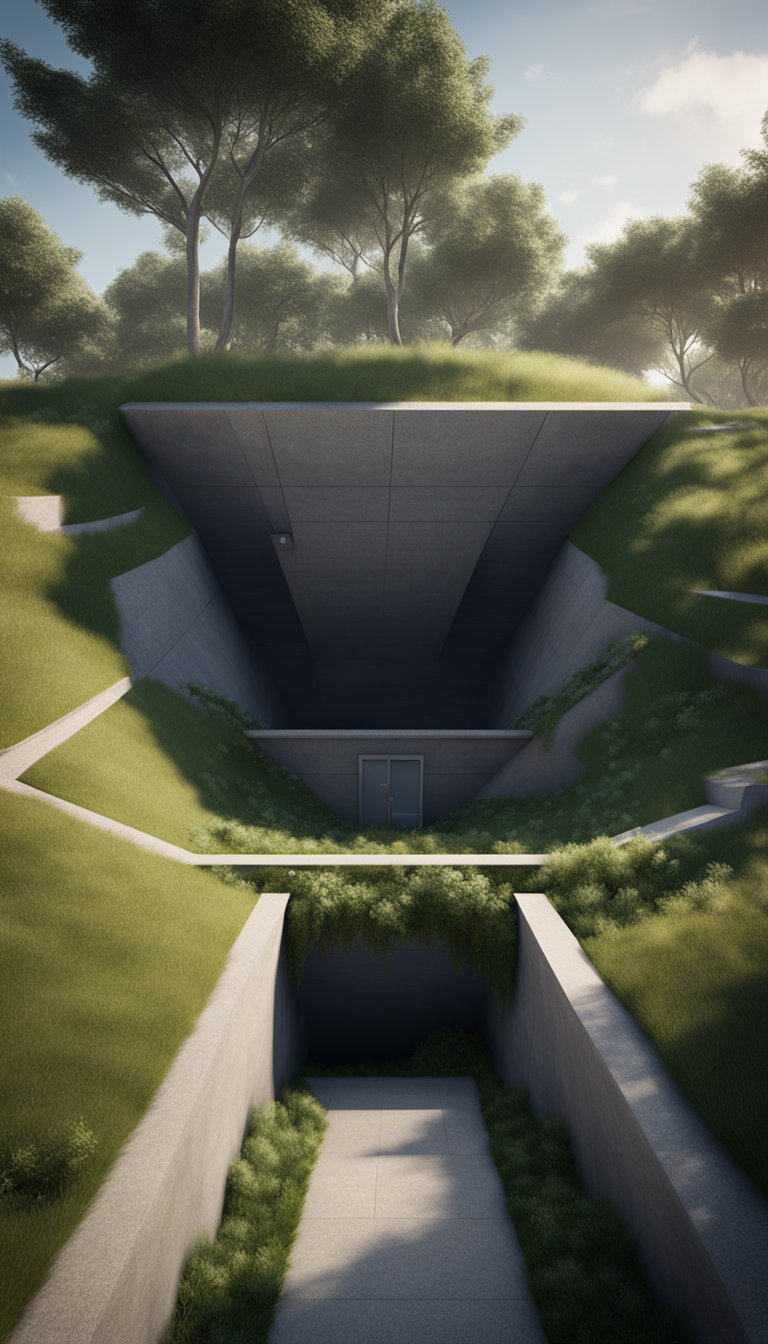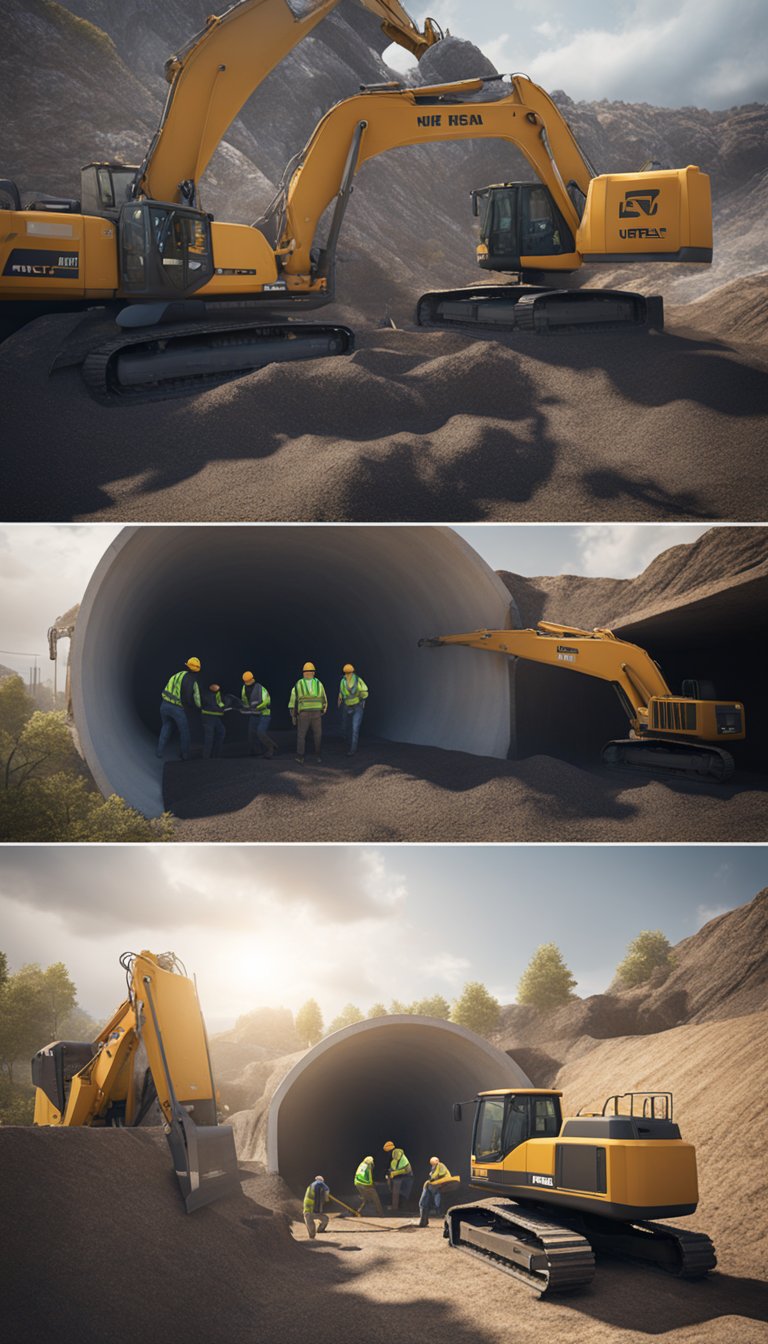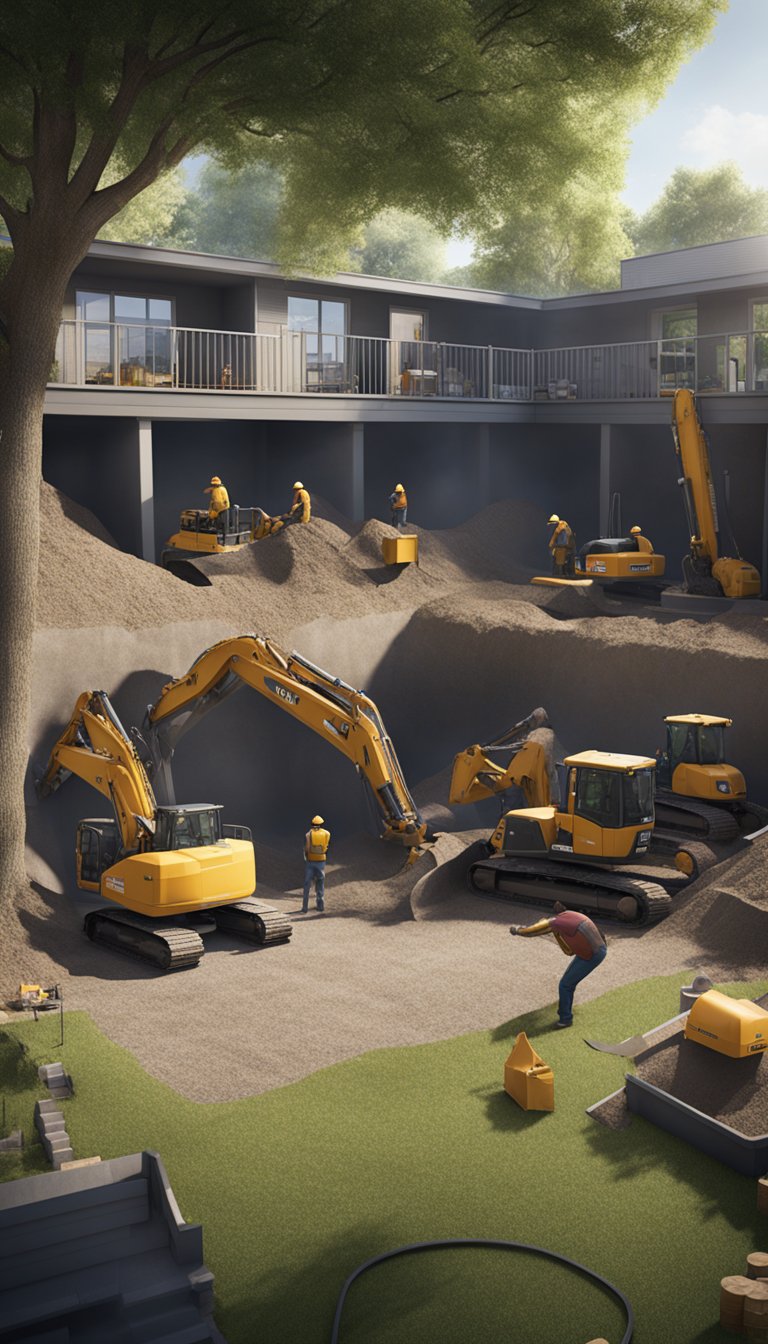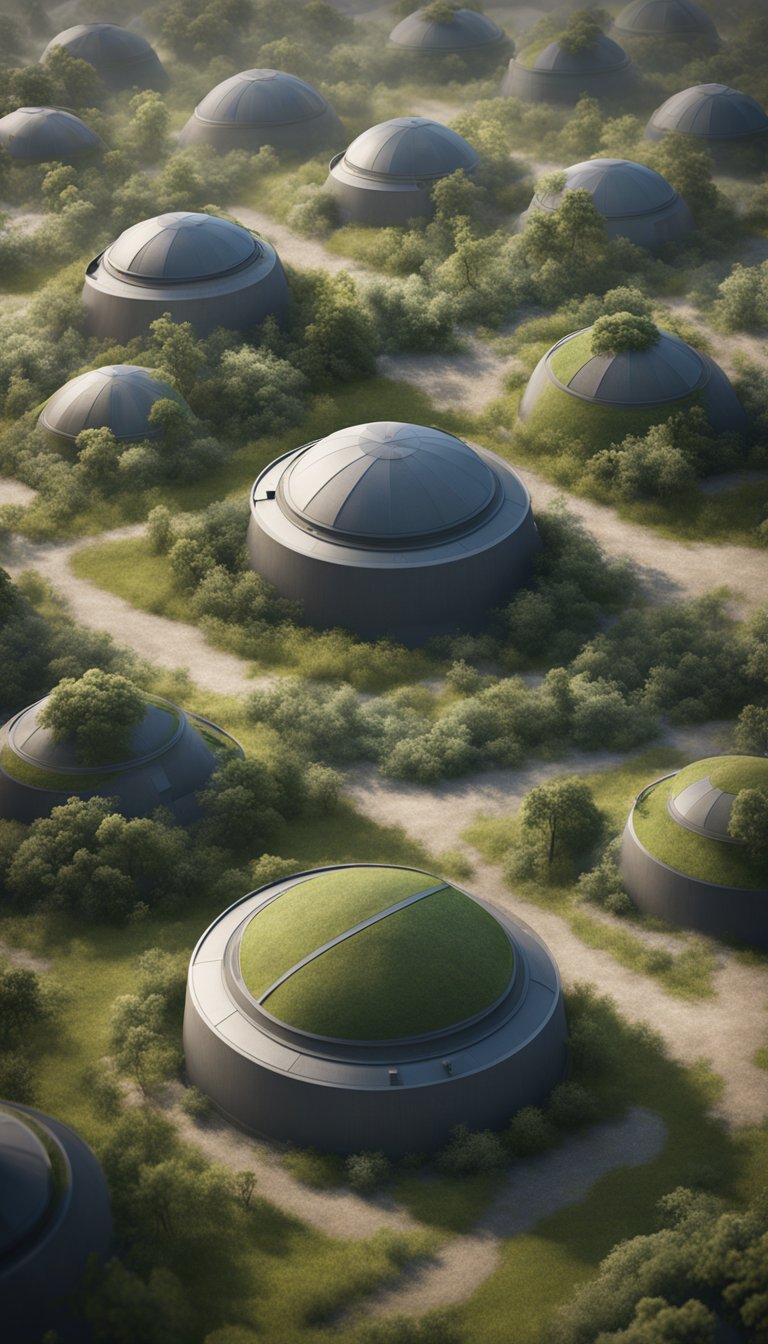How Much Are Underground Storm Shelters? Costs and Options
Average Cost of Underground Storm Shelters

Understanding the costs associated with underground storm shelters is essential for homeowners. Factors such as size, material, and additional features can influence the total price of installation.
Typical Price Range
The price of underground storm shelters can vary significantly. On average, homeowners can expect to pay between $3,000 and $10,000.
- Basic models often start around $3,000 to $5,000. These typically offer standard features.
- Mid-range options can range from $5,000 to $8,000. These may include added safety features and more durable materials.
- Premium shelters can exceed $10,000, incorporating advanced technology, larger sizes, and enhanced amenities.
Additional costs may arise from installation, which can add $1,000 to $3,000 depending on site conditions and distance from the house.
Factors Affecting Shelters Cost
Several key factors influence the cost of underground storm shelters.
- Size: A larger shelter generally costs more. Typical sizes range from seating for 4 to 20 people.
- Materials: Shelters constructed from reinforced concrete or steel tend to be more expensive due to durability.
- Features: Custom amenities like ventilation systems, electricity, or plumbing can increase the total cost.
- Location: Installation fees may differ based on local labor rates and the complexity of the site. For example, rocky soil may require special equipment.
Price Comparison by Shelter Size
The size of the shelter is a significant determinant of cost.
- Small shelters (up to 4 people): Starting around $3,000, they are suitable for personal use.
- Medium shelters (5 to 10 people): Priced between $5,000 and $8,000, they accommodate families.
- Large shelters (11 to 20 people): Expect pricing to be $8,000 to $15,000. These are ideal for community use or larger families.
Types of Underground Storm Shelters

There are several types of underground storm shelters available, each with specific materials and design features. The choice of shelter profoundly influences safety and durability during severe weather events.
Concrete Underground Storm Shelters
Concrete underground storm shelters are among the most robust options available. They typically feature reinforced walls, ensuring high resistance against strong winds and debris.
These shelters can be prefabricated or custom-built. Custom options allow for tailored sizes and internal configurations, enhancing comfort and usability.
Maintaining a dry environment is essential, so proper drainage systems are often included. The cost of concrete shelters varies, generally ranging between $3,000 to $8,000, depending on size and additional features.
Steel Units
Steel underground storm shelters offer high durability and strength. They usually feature a rugged construction that can withstand significant impacts.
Steel units are often pre-manufactured and can be installed quickly. Many designs include additional safety features like locking mechanisms and ventilation systems.
A significant benefit is their resistance to rust and corrosion, especially when treated with protective coatings. Prices for steel units typically range from $2,500 to $7,500, depending on size and complexity.
Underground Fiberglass Shelters
Fiberglass shelters are lighter and often easier to install than their concrete or steel counterparts. They are resistant to corrosion and can endure high winds effectively.
These shelters usually feature smooth interiors, making cleanup easier after storm events.
The insulation properties of fiberglass also help maintain a stable temperature inside, which is important during prolonged use. Their cost ranges from $3,000 to $6,000 depending on the size and any additional features.
Custom and High-Quality Options
Custom and high-quality underground storm shelters provide premium solutions tailored to individual needs. The design flexibility allows for enhanced security features, various entrance options, and improved comfort levels.
These shelters may include advanced air filtration systems, communication devices, and even amenities like lighting and seating.
Additional materials such as reinforced composites or specialty coatings are often utilized in these shelters for optimal performance. Pricing can vary widely, with costs often exceeding $10,000 based on complexity and luxury elements.
Key Features and Safety Standards

Underground storm shelters are designed with specific features to ensure security and safety during severe weather events. Critical standards and testing methods enhance their reliability, particularly in sustaining high winds and debris impact.
Tested at Texas Tech
Many underground storm shelters undergo rigorous testing at Texas Tech University’s Wind Science and Engineering Research Center. This facility simulates extreme weather conditions, including tornado winds. Shelters are subjected to wind speeds up to 250 mph, ensuring they can withstand the most severe storms.
Testing includes assessments of structural integrity, design materials, and the ability to keep occupants safe from external debris. Reports from these tests provide certifications that homeowners can rely on when selecting a shelter.
FEMA and National Storm Compliance
Compliance with Federal Emergency Management Agency (FEMA) guidelines is essential for storm shelters. FEMA recommends design standards that specify reinforced construction and features like proper ventilation and egress routes.
National storm shelter standards are established to assure public safety. A shelter meeting these requirements is tested for wind speed resistance and is often required to have a secure entry and sufficient space for occupants. Certifications help homeowners verify that their chosen shelter aligns with these guidelines.
F5 Tornado Protection
For those in high-risk tornado zones, F5-rated shelters offer crucial protection. These shelters are built to withstand winds exceeding 200 mph and resist flying debris.
F5 protection entails using high-strength materials and advanced engineering techniques. Shelters designed for this level of safety typically include reinforced walls, ceilings, and doors to minimize the risk of penetration from debris. Proper installation and adherence to safety standards enhance their effectiveness in life-threatening scenarios.
Installation and Setup Process

The installation and setup of underground storm shelters involve thorough planning, site preparation, and specific installation steps. Understanding these elements can streamline the process and ensure a proper fit for the shelter.
Site Preparation and Construction
Site preparation is crucial for a successful installation. This process begins with selecting an appropriate location, usually in the backyard or alongside the garage, away from trees and power lines.
Once the site is chosen, it must be cleared and leveled. Any debris, rocks, or vegetation should be removed to create a smooth surface. Builders typically mark out the shelter dimensions using stakes and string to ensure the precise placement and size.
Next, excavation begins. The depth of the hole should accommodate the shelter's height and any necessary drainage requirements. This stage might require heavy machinery, especially for larger shelters.
After excavation, a solid base is often constructed. This can include pouring concrete to provide additional stability and protection against ground moisture, ensuring the shelter remains safe and accessible during storms.
Storm Shelter Installation Steps
The installation process typically follows a series of organized steps. First, the installer will deliver the shelter to the site. At this point, any underground utilities should be marked to prevent damage.
Once positioned, they will lower the shelter into the excavated site. It’s essential that alignment is checked carefully to ensure it is level.
Next, the installer will backfill soil around the structure, securing it in place. This is followed by compacting the soil to minimize settling. If the shelter includes access steps or a door, these components will be installed at this time.
Finally, connection to any utilities, such as electricity or ventilation systems, might be made, if applicable. It's important to confirm that all connections comply with local building codes.
Garage and Accessible Locations
In some instances, installing a storm shelter within a garage is preferred for convenience. This option allows quick access during emergencies. Design considerations must account for door sizes and space for vehicle parking.
For accessible locations, the shelter should comply with accessibility standards. The entrance should be wide and feature steps or a ramp that accommodates all users.
Some shelters can be customized to blend in with existing structures, maintaining aesthetics while providing safety.
When situating a shelter, convenience and safety should remain priorities to ensure that the installation is both functional and adaptable for future needs.
Installation and Delivery Charges

Installation and delivery charges significantly impact the total cost of an underground storm shelter. These fees can vary based on distance and specific requirements related to the shelter being installed.
Distance Charge and Haul Fees
Distance charges apply based on the proximity of the installation site to the supplier's location. Typically, manufacturers or contractors have a base fee that covers a specific mileage radius, often between 50 to 100 miles. For distances beyond this range, additional fees accumulate, generally calculated on a per-mile basis.
For example, the charge could be $2 to $4 per mile for distances exceeding the base coverage. Haul fees may also arise if the shelter is particularly heavy or requires special equipment for transport. Factors influencing haul fees include the shelter's size, weight, and the terrain of the delivery site.
Additional Payment Requirements
Alongside distance charges, there may be additional payment requirements to consider. Some companies request a deposit before beginning the installation process. This deposit can range from 10% to 50% of the total project cost, depending on the company’s policy and the shelter's price.
Customers should be aware of potential additional fees, such as for site preparation, grading, or permitting, which might be necessary before installation. It is advisable to obtain a detailed quote that includes all potential charges associated with the delivery and installation process to avoid unexpected costs.
Shelter Size and Capacity Options

Selecting the appropriate size for an underground storm shelter is crucial for ensuring safety and comfort. The options typically range from standard dimensions to custom builds, accommodating various family sizes and needs.
Sizing Guide: 6x8, 6×12, and Custom Dimensions
Standard sizes like 6x8 and 6x12 serve as reliable options for families seeking shelter. A 6x8 shelter can comfortably fit around four to six individuals, making it suitable for smaller households.
In contrast, a 6x12 shelter offers more space, accommodating six to eight people. This size is ideal for larger families or those who want additional room for supplies.
For unique needs, custom dimensions are available. Homeowners can work with manufacturers to design shelters that meet specific requirements, ensuring that every family's space and safety concerns are addressed.
Choosing the Right Size to Accommodate Your Family
When choosing a shelter size, families should consider their size and any future plans. A 6x8 shelter might be perfect now but could feel cramped if the family grows.
A larger space, like 6x12, allows for extra supplies, such as food and water, providing peace of mind during emergencies.
It's essential to ensure there is enough room for everyone to sit or stand comfortably. Evaluating potential usage scenarios—like how long the family might need to stay inside—can help in making a well-informed decision.
Another factor includes accessibility. A well-sized shelter should enable easy entry and exit for all family members, including children and pets, to enhance safety when it matters most.
Durability and Construction Materials

Underground storm shelters are engineered for strength and reliability, ensuring safety during severe weather events. The materials used in their construction play a crucial role in determining their longevity and effectiveness.
Withstand Severe Weather and Debris
Storm shelters utilize robust materials such as reinforced steel or concrete. These materials are designed to withstand high winds and heavy debris, providing a safe place during tornadoes or storms.
The use of steel reinforcements adds extra durability. Many shelters have unique features like heavy-duty latches that secure the doors. This prevents unauthorized access while ensuring ease of entry when needed.
Proper installation also contributes to their durability. A well-constructed shelter can often endure impact from flying debris. Buyers should check for certifications that confirm the shelter's ability to resist specific weather conditions.
Warranty and Assurance for Peace of Mind
A reliable warranty provides peace of mind for those investing in an underground storm shelter. Many manufacturers offer warranties that cover defects in materials or workmanship, often ranging from 10 to 25 years.
It's vital for homeowners to read the warranty details closely. Some warranties may also cover structural integrity, ensuring that the shelter remains intact after extreme weather.
Additionally, companies might offer extended service or maintenance plans. This provides an added layer of assurance, ensuring that the shelter remains in good condition for years to come.
Regional Differences and Considerations

The need for underground storm shelters varies across different regions, particularly in areas prone to severe weather like tornadoes. Factors such as soil type and local regulations influence both the necessity and feasibility of installation.
Storm Shelter Needs in Texas
Texas experiences a significant number of tornadoes, particularly in the eastern and central parts of the state. This creates a strong demand for underground storm shelters. Homeowners often seek these structures to ensure safety during severe weather events.
Costs for shelters can vary widely, influenced by local building codes and the complexity of installation. In Texas, prices typically range from $3,000 to $10,000, depending on size and materials. Many residents opt for additional features such as ventilation systems or reinforced doors, which can increase installation costs.
Rock, Dirt, and Soil Installation Challenges
The type of soil prevalent in Texas can present challenges for installing underground storm shelters. Areas with heavy clay soil may complicate excavation and increase costs due to potential settling issues.
Rocky terrain can further complicate the installation process. It often necessitates specialized equipment for excavation, which can add to the overall expense. Contractors may charge more in such regions due to these added complexities.
Homeowners should conduct soil tests before installation. This ensures that the chosen site is suitable for a storm shelter, avoiding unexpected complications during construction.
DIY and Customization Options

Homeowners considering underground storm shelters often weigh the benefits of DIY installation against professional options. Customization features can enhance safety and usability, making it essential to carefully evaluate both approaches.
DIY vs Professional Installation
DIY installation can significantly reduce costs, allowing homeowners to save money on labor. They can find various plans and kits online specifically designed for storm shelters. Key considerations include the availability of tools, required permits, and adherence to local building codes.
However, a professional installer brings expertise and experience. They ensure proper construction and may offer warranties that cover their work. An experienced installer can address potential site-specific challenges, such as soil conditions or structural concerns. Weighing the pros and cons will help determine which approach best fits the homeowner's needs.
Electrical and Added Features
Incorporating electrical systems into underground storm shelters can enhance functionality. Consider adding lighting, ventilation, and power outlets for convenience. Battery backups can provide electricity during outages, ensuring safety and comfort.
Customization options include reinforced doors, storage for emergency supplies, and communication devices like radios. Homeowners should carefully evaluate their specific needs when selecting features. Consulting with professionals can help identify the best systems for incorporating into the design.

Leave a Reply